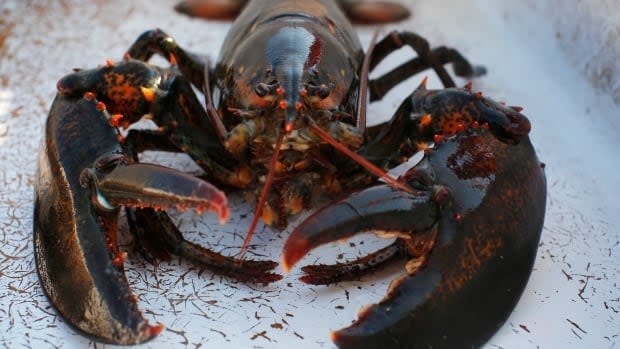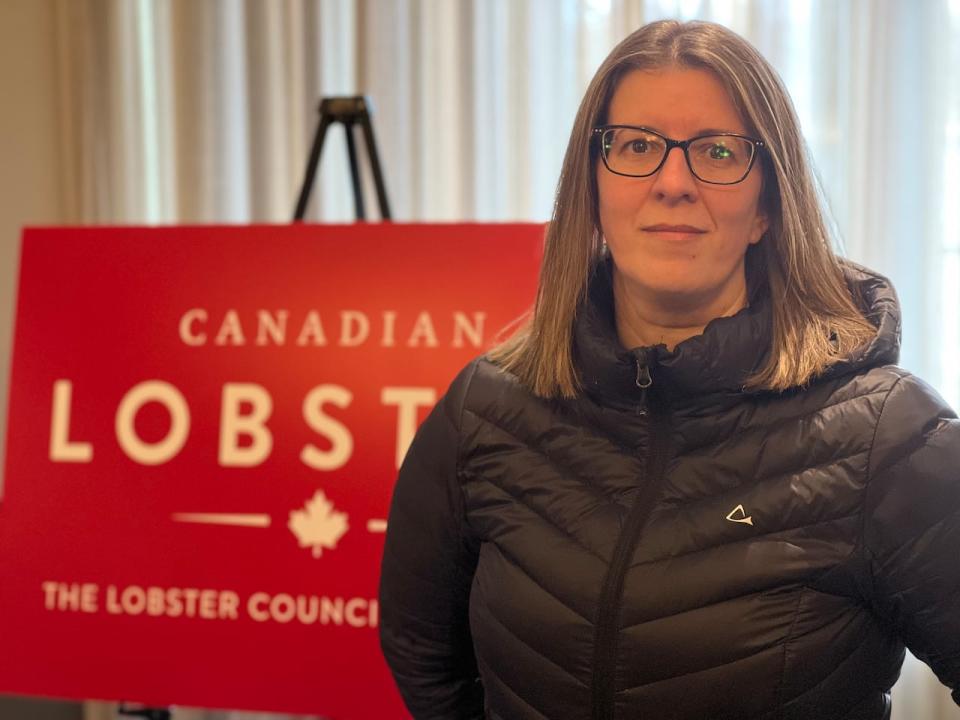Lobster harvesters in Atlantic Canada to vote on increasing minimum legal size this year

Fishermen in Canada's biggest lobster fishing district will vote this spring on whether to increase the minimum legal size of lobster they catch.
Lobster harvesters in southwestern Nova Scotia, and others throughout Atlantic Canada, must decide if they will match an increase coming south of the border. At stake is maintaining access to the United States market.
"It will be an individual vote. That's a big decision that every single enterprise and owner has to look at from their own business," said Heather Mulock, executive director of the Coldwater Lobster Association, which represents fishermen in lobster fishing area 34 (LFA 34).
In late May or June, the 979 licence holders in the area will be asked to vote on whether to match increases in allowable U.S. catch measurements that will come into effect Jan. 1, 2025, and again in 2027.
Live Canadian lobster that fall under the new limits would not be allowed into the U.S.
That includes bonded shipments of lobster under the new minimum in the U.S., according to an information package sent to fishermen in southwestern Nova Scotia.
Drawbacks to not conforming with U.S. minimum size
That could block trucking of "undersized" Canadian lobster across the border for flights to Asia from airports in Boston or New York.
The American size increase was automatically triggered by surveys in the Gulf of Maine showing declines in young lobster.
Next January, the new legal carapace size in Maine will be 84 millimetres. It will increase to 86 millimetres in 2027.
Both are higher than 82.5 millimetres, the length used in most of Canada.
In LFA 34, the initial two-millimetre size increase — about the thickness of a loonie — affects between 12 to 15 per cent of the catch, said Mulock.
Accepting new minimum size would increase throw backs
If fishermen opt to increase the minimum to match the new U.S. measurement, estimates show the lobster they would have to throw back will increase in length by 10 to 15 per cent and be available for harvest next season.
"We are a live market. We do have to look at this and take it seriously. Thirty-nine per cent of our market is the U.S. Ultimately, the decision is what is in our best interest from a market and economic point of view and for sustainability," she said.
The information package presented to fishermen says China is the leading export market for live lobster caught in LFA 34, accounting for 45 per cent of sales.

Heather Mulock, executive director of the Coldwater Lobster Association, says lobsters thrown back to match the U.S. minimum would be available for harvest the next season. (Mark Crosby/CBC)
If harvesters opt to maintain the status quo, "other countries, like China, could pick up the 'slack,'" says the document. "However, at what price?"
"China is aware of the U.S. measure increase and will most likely capitalize on this by reducing their price to purchase our product. In essence, China would be purchasing product that cannot be moved easily elsewhere – having the upper hand in export negotiations," the document said.
Fishermen were told the Canadian market could not absorb the 12 to 15 per cent surplus.
No consensus on what to do
The individual impacts on Maritime lobster fishing areas were presented to fishermen and buyers at a meeting Tuesday in Halifax held by the Lobster Council of Canada.
There was no consensus on how to respond to the looming increase in the U.S. minimum.
Harvesters in some lobster fishing areas in the Gulf of St. Lawrence have minimum carapace sizes well below the 82.5-millimetres standard.

Geoff Irvine of the Lobster Council of Canada says harvesters must decide whether to increase the minimum size to match the Americans. (Mark Crosby/CBC)
Others in Quebec and parts of Cape Breton have larger minimum sizes.
"They don't have to decide to do anything, but if they want to make some changes for conservation or for economics, they need to build consensus within their LFAs or their associations and take it to DFO and ask for a change," said Geoff Irvine of the Lobster Council of Canada.
"It's really up to the harvesters and the associations to do that,' he said.
Landings fall in southern Nova Scotia
The decision on increasing the Canadian minimum comes as landings fall in southern Nova Scotia.
"We have been seeing decrease over the last number of years, particularly in the Bay of Fundy in LFA 34," said Adam Cook, a Fisheries and Oceans Canada biologist for lobster in the Maritimes.
Last year 15,263 tonnes of lobster were landed in LFA 34 worth $305 million, according to preliminary stats released by Fisheries and Oceans Canada.

Adam Cook is a Fisheries and Oceans Canada biologist for lobster in the Maritimes. He says lobster landings are trending down in southwestern Nova Scotia. (Mark Crosby/CBC)
That was a decrease of 4,379 tonnes and worth $143 million less than the 2021-22 season.
Cook says there is a chance the stock could dip from the healthy down to the cautious zone.
"But we're not there yet. That's the best way to put it," he told CBC News Tuesday.
MORE TOP STORIES


